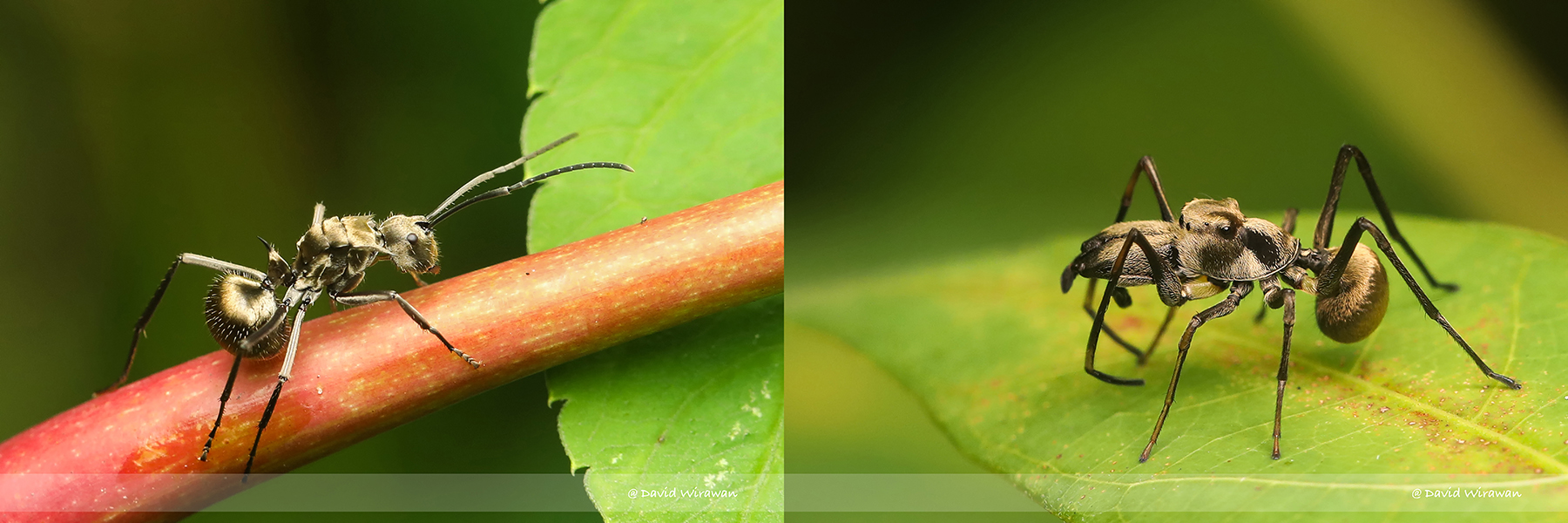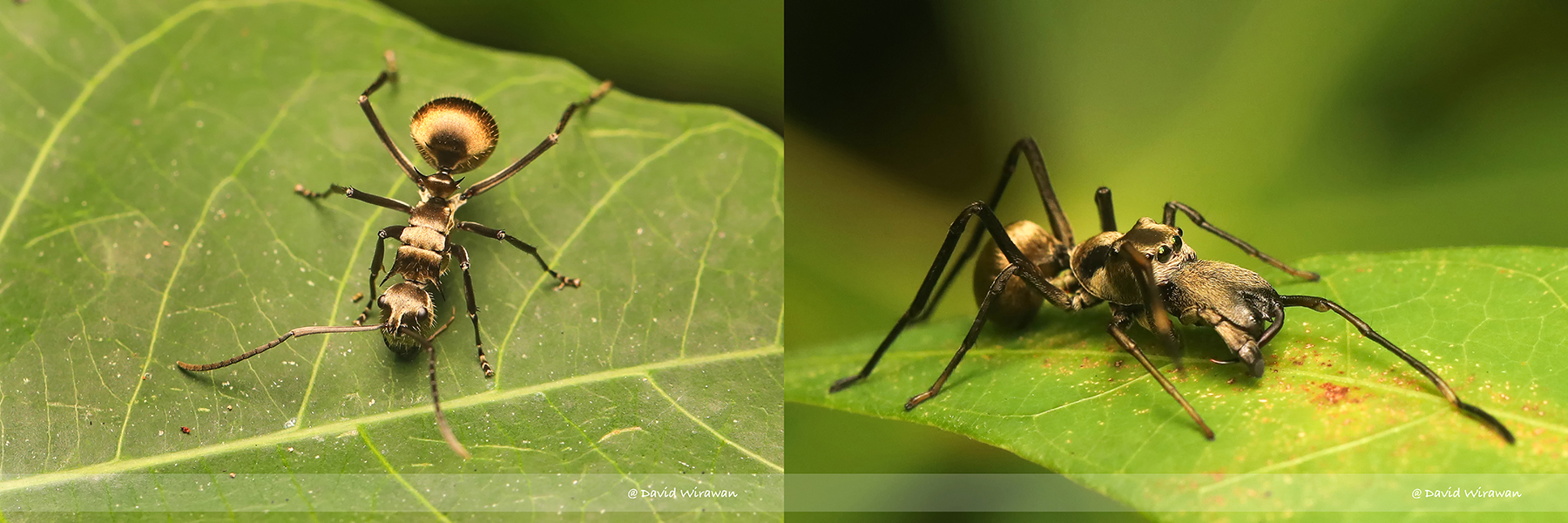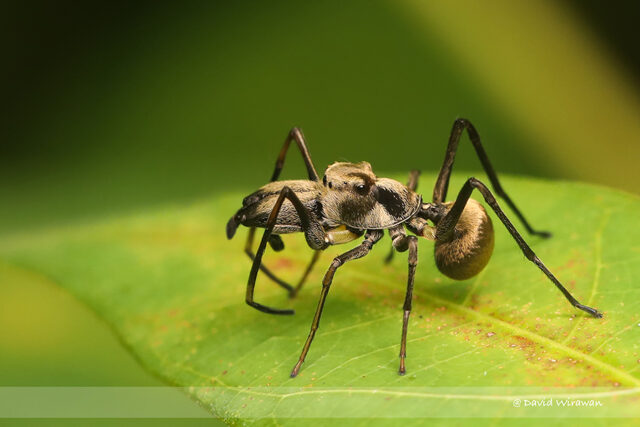While looking for insects this morning, I spotted an “ant”. When I looked closer, I realized that it was not a usual ant, as it was longer than others. “Maybe it was attacking other insects,” I thought. In the end, I focused on that “ant”, and finally realized it was not an ant but a spider. The spider looked exactly like an ant, just that its jaw was a little different.

I took photos of the ants (Polyrhachis illaudata) and the spiders (Toxeus maxillosus) for comparison. I was amazed at this natural phenomenon.

Here is the definition of Mimicry that I copied from Wikipedia for reference.
In evolutionary biology, mimicry is an evolved resemblance between an organism and another object, often an organism of another species. Mimicry may evolve between different species, or between individuals of the same species. Often, mimicry functions to protect a species from predators, making it an anti-predator adaptation. Mimicry evolves if a receiver (such as a predator) perceives the similarity between a mimic (the organism that has a resemblance) and a model (the organism it resembles) and as a result changes its behaviour in a way that provides a selective advantage to the mimic.
The resemblances that evolve in mimicry can be visual, acoustic, chemical, tactile, or electric, or combinations of these sensory modalities. Mimicry may be to the advantage of both organisms that share a resemblance, in which case it is a form of mutualism; or mimicry can be to the detriment of one, making it parasitic or competitive.
Batesian mimicry is a form of mimicry where a harmless species has evolved to imitate the warning signals of a harmful species directed at a predator of them both. It is named after the English naturalist Henry Walter Bates, after his work on butterflies in the rainforests of Brazil.
Batesian mimics are species which typically lack strong defences of their own, and make use of their resemblance to well-defended ants to avoid being attacked by their predators, some of which may be ants.
Ant mimicry or myrmecomorphy is mimicry of ants by other organisms. Ants are abundant all over the world, and potential predators that rely on vision to identify their prey, such as birds and wasps, normally avoid them, because they are either unpalatable or aggressive. Spiders are the most common ant mimics
Over 300 spider species mimic the social behaviours, morphological features and predatory behaviour of ants. Fourteen genera of jumping spiders (Salticidae) mimic ants. The jumping spider genus Myrmarachne are Batesian mimics which resemble the morphological and behavioural properties of ants to near perfection. These spiders mimic the behavioural features of ants such as adapting their zig-zag locomotion pattern, and the act of creating an antennal illusion by waving their first or second pair of legs in the air. The slender bodies of these spiders make them more agile, allowing them to easily escape from predators. Studies on this genus have revealed the major selection force, the avoidance of ants by predators such as spider wasps, that has driven the evolution of ant mimicry in spiders.
Ant mimicry has a cost: the body of spider myrmecomorphs is much narrower than non-mimics, reducing the number of eggs per eggsac, compared to non-mimetic spiders of similar size. They seem to compensate by laying more eggsacs over their lifetimes.
More photos of Toxeus maxillosus
References:
https://en.wikipedia.org/wiki/Mimicry














